George Washington's Ferry Farm
Introduction
Text-to-speech Audio
George Washington's home in 1738 was called the "Ferry Farm" because of the frequency of travelers arriving from the other side of the Rapahannock. Washington was six years old when he lived on this land and there are many stories of him swimming in the river. During the Civil War the Farm was used as a staging area for the Union Army before the Battle of Fredericksburg. The Farm is currently run as a museum. Visitors can watch archaeologists search the grounds for more information about Washington, the Civil War, and the periods in between.
Images
A painting of the Home
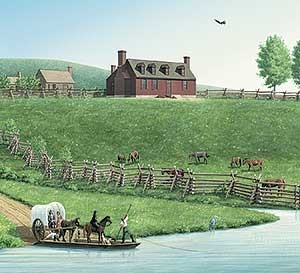
Welcome sign to Ferry Farm
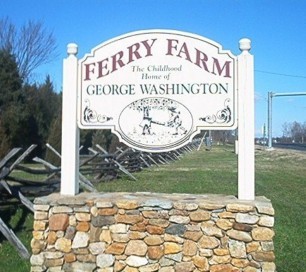
Rendering of how Ferry Farm may have appeared during Washington's youth
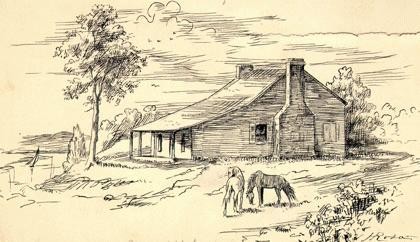
Aerial view of Ferry Farm grounds
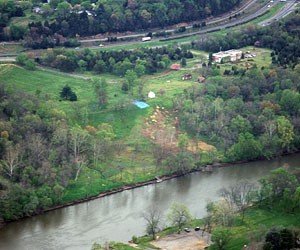
A Survey Shack used by Washington (restored) located on the grounds of Ferry Farm
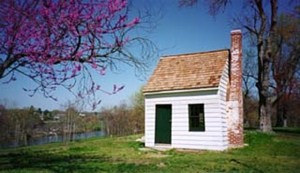
Backstory and Context
Text-to-speech Audio
Located in Stafford County, Ferry Farm became the home to the Washington's in 1738. George Washington was 6 years old when the family moved there. It was named Ferry Farm because people crossed the Rappahannock River from the farm to the town of Fredericksburg. George Washington was known to spend his time swimming in the river and take the ferry to Fredericksburg. This ferry was not owned or operated by the Washington family. The house was damaged on Christmas in 1940, and evidence shows only a small portion of the house was affected. All the members that lived at Ferry Farm were Augustine and Mary (parents), George, Betty, Charles, Samuel, John and Mildred (who died as an infant on the farm). As George Washington grew older, he spent less and less time at the farm even though he inherited it from his father and was the owner.
During the Civil War, Ferry Farm served as a staging ground for the Union Army attacking Fredericksburg. Abraham Lincoln visited the troops at the farm in 1862. By the mid 1800s, the Union troops had ruined the house on the farm that had been newly replaced. They also ruined smaller buildings on the property, crops, and farm animals.
When visiting Ferry Farm, you will spend time in the Visitor Center, which includes lots of Civil War and colonial artifacts from the property. The archaeology lab is open Monday through Friday, and you are able to watch the archaeologists working. You can walk around the gardens that contain plants that were growing there during the 18th century. The self-guided tour allows you to explore the 80-acre farm.
Sources
Phil Levy. "Where The Cherry Tree Grew." New York: St. Martin's Press, 2013.
